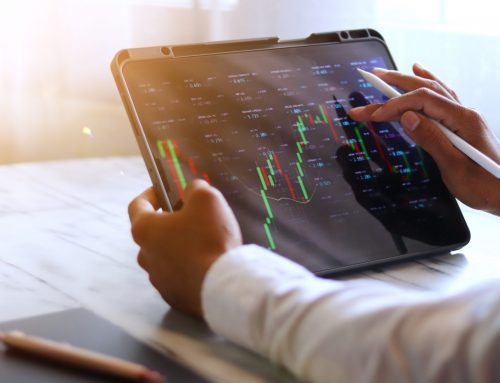Are you feeling the economic uncertainty in the air? You’re not alone. Recent data on consumer confidence paints a complex picture of the current economic landscape, with implications that could significantly impact your investment decisions.
The latest Consumer Confidence Index has dipped to 100.4 in June from 101.3 in May. While this might seem like a minor shift, it’s part of a larger trend that deserves our attention. Let’s dive into what this means for you and your financial future.
The Present vs. The Future: A Tale of Two Indices
The consumer confidence data presents an intriguing dichotomy. On one hand, the Present Situation Index, which measures how consumers feel about current economic conditions, has increased to 141.5. This suggests that many people feel relatively good about the current state of affairs, particularly when it comes to the job market.
However, the Expectations Index, which looks six months into the future, has fallen to 73.0. This number is particularly concerning because it’s been below 80 – the threshold that typically signals a recession – for five consecutive months. In other words, while people feel okay about today, they’re increasingly worried about tomorrow.
What’s driving this pessimism? Concerns about future income, business conditions, and the overall economic outlook are weighing heavily on consumers’ minds. This is especially true for those aged 35-54, who showed the most significant decline in confidence.
The Impact on Consumer Behavior
These shifts in confidence are already influencing consumer behavior. Fewer people are planning to make big-ticket purchases like homes, cars, or major appliances. This reluctance is largely due to high interest rates, which make financing these purchases more expensive.
On the flip side, there’s a silver lining: more people are planning vacations. This could signal opportunities in the travel and hospitality sectors, even as other areas of consumer spending may slow down.
What This Means for Your Investment Strategy
Given these trends, how should you approach your investments? Here are some key strategies to consider:
Diversification is Key: With uncertainty on the horizon, it’s more important than ever to spread your investments across different sectors and asset classes. This isn’t just a buzzword; it’s a necessary strategy to protect yourself from unexpected downturns in any single market segment. Diversification can help cushion your portfolio against potential downturns in specific areas of the economy.
Consider Defensive Sectors: Given the concerns about future economic conditions, you might want to increase your exposure to defensive sectors like utilities, consumer staples, and healthcare. These sectors typically offer stability as they provide essential services that remain in demand regardless of economic shifts. They tend to perform relatively well even during economic downturns. For example, utility companies like NextEra Energy (NEE) or Duke Energy (DUK) provide electricity and water, which are always needed. In consumer staples, companies such as Procter & Gamble (PG) or Coca-Cola (KO) produce everyday necessities that people buy regardless of the economic climate. Healthcare giants like Johnson & Johnson (JNJ) or UnitedHealth Group (UNH) offer products and services that remain essential even in tough times. Telecommunications companies like Verizon (VZ) provide communication services that are considered vital in modern life. Even discount retailers like Dollar General (DG) can perform well during downturns as consumers seek to save money. Remember, while these sectors are generally defensive, it’s crucial to research specific companies and consider your overall investment strategy before making decisions.
Don’t Ignore Growth Opportunities: While caution is warranted, don’t miss out on potential growth. The travel and hospitality sectors, for instance, could see a boost from increased vacation planning. This trend might indicate a shift in consumer spending from goods to experiences, presenting opportunities for investors looking to capitalize on post-pandemic recovery in these industries. For example, consider companies like Booking Holdings (BKNG), which owns travel websites such as Booking.com and Priceline, or Airbnb (ABNB), which could benefit from increased travel demand. In the airline industry, companies like Southwest Airlines (LUV) or Delta Air Lines (DAL) might see improved performance as travel rebounds. Hotel chains such as Marriott International (MAR) or Hilton Worldwide Holdings (HLT) could also benefit from increased bookings. For those interested in the broader tourism industry, the ETFMG Travel Tech ETF (AWAY) offers exposure to a range of travel and tourism-related companies. Additionally, companies that cater to experiences, like Live Nation Entertainment (LYV) for concerts and events, or Walt Disney Co. (DIS) for theme parks and entertainment, might see growth as consumers prioritize experiences over material goods. Remember, while these sectors show promise, it’s important to conduct thorough research and consider the potential risks before investing.
Continue to Keep an Eye on the Fed: Consumer expectations about interest rates are changing, with fewer people expecting rates to rise further. This could impact various sectors differently, so stay informed about Federal Reserve policies. Their decisions on interest rates and inflation management can significantly affect the investment landscape.
Quality Matters: In uncertain times, focus on companies with strong balance sheets, consistent cash flows, and a history of weathering economic storms. These quality companies, such as Procter & Gamble (PG), Coca-Cola (KO), Johnson & Johnson (JNJ) or UnitedHealth Group (UNH), which we mentioned above, are more likely to maintain their performance even in challenging economic conditions. There are a lot of quality companies beside the ones mentioned in this article that you can explore.
How to Identify Quality Companies: Remember to focus on their financial health and market position. Look for firms with strong balance sheets featuring low debt and high cash reserves, which indicate financial flexibility. Stable and predictable cash flows are also crucial, especially from businesses in sectors like utilities, healthcare, or consumer staples that provide essential services. Additionally, consider their historical performance in economic downturns and a track record of consistent dividends, as these factors suggest resilience and reliability. Tools available on financial news platforms and investment research websites can help you analyze these aspects effectively.
Regular Rebalancing: As economic conditions evolve, make sure your portfolio stays aligned with your risk tolerance and investment goals. Regular rebalancing can help with this.
Watch Key Economic Indicators: Keep a close eye on employment data, inflation trends, and GDP growth. These factors will likely drive both consumer confidence and market performance in the coming months.
The Bigger Picture
Despite the recent dip in consumer confidence, it's essential to remember that this is just one of many economic indicators. The economy continues to grow, and the labor market is still robust. However, the consistently low Expectations Index warns of potential challenges ahead. While historical data link consumer confidence with economic recessions, it doesn't guarantee one. This context calls for vigilance and preparation for possible market volatility.
So, what concrete steps can you take now? Start by reviewing your current investment portfolio. Are you overly exposed to sectors that might be hit hard if consumer spending slows? Do you have a good balance between growth opportunities and more stable, defensive positions?
Consider implementing a barbell strategy - balancing higher-risk, growth-oriented investments with more conservative, income-generating assets. This approach can help you capture potential upside while also providing some downside protection. For example, you might invest in both growth-oriented tech stocks and stable utility companies.
Lastly, remember that while the economic indicators suggest caution, they also present opportunities. The key is to act thoughtfully and strategically, using the insights from consumer confidence data to inform, but not dictate, your investment decisions. With careful planning and a balanced approach, you can position yourself to weather potential economic storms while still pursuing growth opportunities.
Want These Types of Insights at Your Fingertips so You Can Win More Trades?
Use VectorVest to analyze any stock free. VectorVest is the only stock analysis tool and portfolio management system that analyzes, ranks and graphs over 18,000 stocks each day for value, safety, and timing and gives a clear buy, sell or hold rating on every stock, every day.
Before you invest, check VectorVest! Click here to ANALYZE ANY STOCK FREE and see our system in action!










Leave A Comment